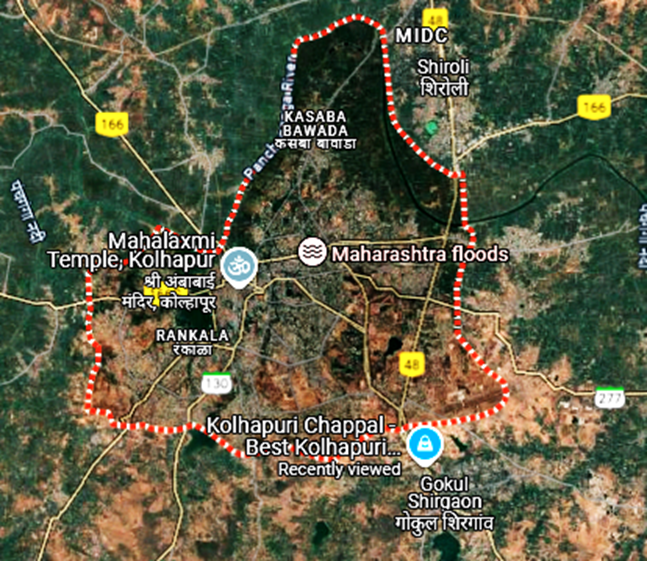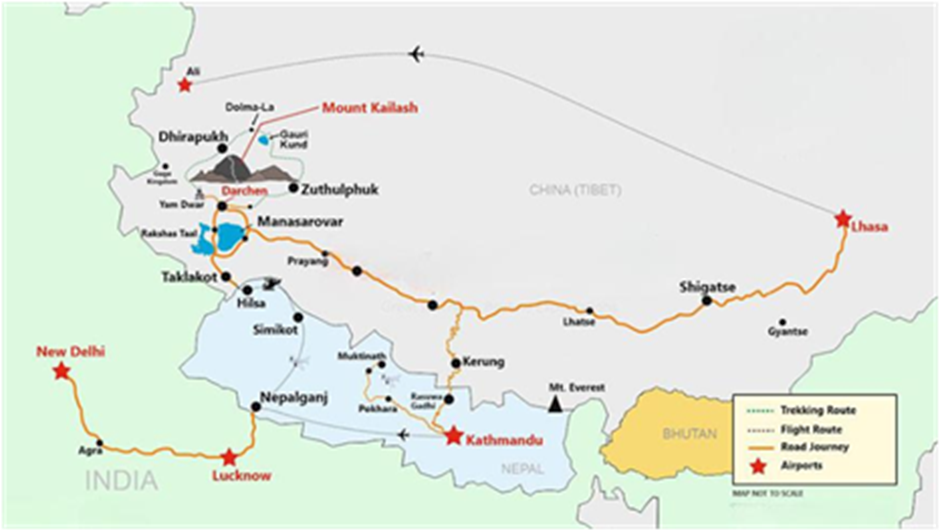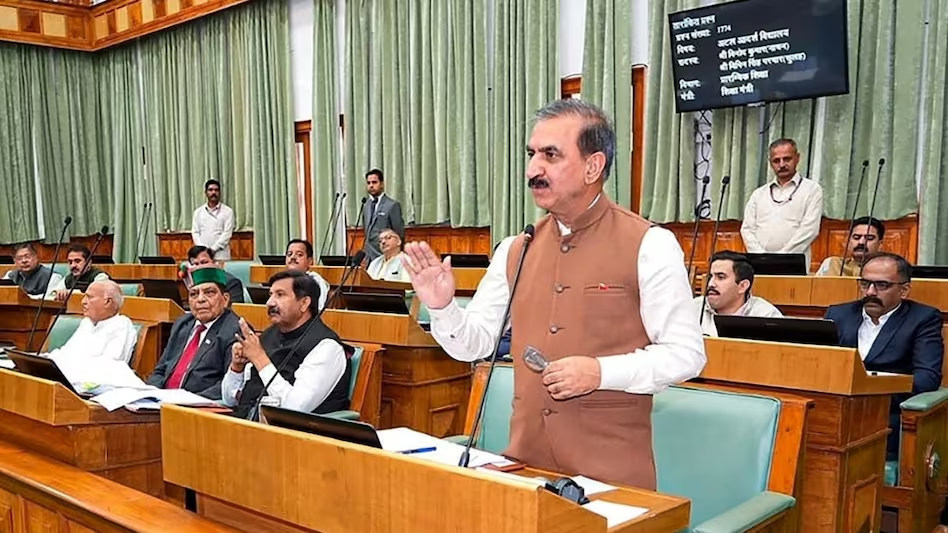- Courses
- GS Full Course 1 Year
- GS Full Course 2 Year
- GS Full Course 3 Year
- GS Full Course Till Selection
- Answer Alpha: Mains 2025 Mentorship
- MEP (Mains Enrichment Programme) Data, Facts
- Essay Target – 150+ Marks
- Online Program
- GS Recorded Course
- Polity
- Geography
- Economy
- Ancient, Medieval and Art & Culture AMAC
- Modern India, Post Independence & World History
- Environment
- Governance
- Science & Technology
- International Relations and Internal Security
- Disaster Management
- Ethics
- NCERT Current Affairs
- Indian Society and Social Issue
- NCERT- Science and Technology
- NCERT - Geography
- NCERT - Ancient History
- NCERT- World History
- NCERT Modern History
- CSAT
- 5 LAYERED ARJUNA Mentorship
- Public Administration Optional
- ABOUT US
- OUR TOPPERS
- TEST SERIES
- FREE STUDY MATERIAL
- VIDEOS
- CONTACT US
PLACES IN NEWS 30th June 2025
PLACES IN NEWS 30th June 2025
30-06-2025

1. Kolhapur

Why in the News?
- Italian luxury fashion brand Prada showcased sandals in its 2026 spring-summer men’s collection that look very similar to Kolhapuri chappals — a traditional Indian footwear. These slippers have been part of Indian culture for centuries and are made by skilled artisans.
- The Kolhapuri chappals also have a Geographical Indication (GI) tag, which means they are legally recognized as a product linked to a specific place in India. Many chappal makers now accuse Prada of copying their design without giving credit or asking for permission.
What are the Key Highlights?
- State: Maharashtra
- Region: Western Maharashtra (also called Paschim Maharashtra)
- Coordinates: Between 16.40°N to 17.10°N latitude and 73.40°E to 74.40°E longitude
- Boundaries:
- North: Sangli district
- East: Belgaum district (Karnataka)
- South: Sindhudurg district
- West: Ratnagiri district
- Area and Terrain:
- Total Area: Around 7,685 sq. km
- Terrain:
- Mainly undulating plateau and fertile valleys
- Lies in the rain-shadow area of the Western Ghats
- Partly covered by Sahyadri hills on the west
- Rivers:
- Major river is the Panchganga, which is a tributary of the Krishna River.
- Other rivers include Dudhganga, Vedganga, Warna, and Bhogawati
- Climate:
- Type: Tropical monsoon
- Rainfall: Moderate to heavy, especially in hilly areas
- Temperature:
- Summer: 25°C to 40°C
- Winter: 14°C to 30°C
- Economy and Industry:
- Agriculture:
- Main crops: Sugarcane, rice, jaggery, groundnut, soybean
- Known as one of the major sugar-producing districts of Maharashtra
- Industry:
- Famous for Kolhapuri chappals, textiles, sugar mills, and foundry units
- Industrial areas include Shiroli MIDC, Gokul Shirgaon, and Kagal Five Star MIDC
- Agriculture:
- Culture and Heritage:
- Famous for:
- Kolhapuri chappals (with GI tag)
- Kolhapuri cuisine (like Tambada and Pandhara Rassa)
- Mahalakshmi Temple – a major Hindu pilgrimage site
- Languages: Marathi (main), along with Kannada in some border areas
- Festivals: Navratri, Mahalaxmi Yatra, Ganesh Chaturthi
- Famous for:
- Transport and Connectivity:
- Road: Well-connected by national and state highways (NH-48 passes through)
- Rail: Kolhapur railway station (C Shahumharaj Terminus) links to Mumbai, Pune, Bengaluru
- Air: Kolhapur Airport (Ujalaiwadi)currently being expanded for better domestic connectivity
- Environmental and Ecological Aspects:
- Part of Western Ghats Ecosystem, a UNESCO World Heritage site
- Includes protected areas like:
- Radhanagari Wildlife Sanctuary
- Dajipur Bison Sanctuary
- Rich in biodiversity and home to species like Indian bison (gaur), leopards, deer, and various birds.
2. Kailash Mansarovar

Why in the news?
- The first batch of Indian pilgrims since 2020 has undertaken the Kailash Mansarovar Yatra, marking the resumption of the pilgrimage after a 6-year gap caused by the COVID-19 pandemic and India-China border tensions.
- The group visited Mount Kailash and Mansarovar Lake in the Tibet Autonomous Region of China and is scheduled to return to India on July 1, 2025.
- Pilgrims have appealed to India and China to increase the number of yatra slots, allowing more people to experience the spiritual journey.
- The yatra also signifies a positive development in people-to-people relations between India and China amidst continued military standoff at the Line of Actual Control (LAC).
Geographical Location
- Mount Kailash and Lake Mansarovar are located in the Tibet Autonomous Region (TAR) of China, near the source of some of Asia's major rivers.
- They lie north of the Himalayas, near the western part of Tibet, close to the borders with India (Uttarakhand) and Nepal.
Mount Kailash
- Height: Approx. 6,638 metres (21,778 feet).
- Considered sacred in four religions: Hinduism, Buddhism, Jainism, and Bon(Tibetan indigenous religion).
- Hindus believe it to be the abode of Lord Shiva.
- Buddhists regard it as the home of Demchok (Chakrasamvara).
- Jains believe their first Tirthankara, Rishabhdev, attained nirvana here.
- Parikrama (circumambulation): Pilgrims walk ~52 km around the mountain, usually taking 3 days.
Lake Mansarovar
- Height: 4,588 metres (15,049 feet) — one of the highest freshwater lakes in the world.
- Surface Area: About 412 sq. km.
- Mythological significance: Believed in Hinduism to have been created by Lord Brahma. Bathing in its water is said to cleanse sins and bring salvation.
- Connected to Rakshastal (a nearby saline lake) by a short channel, symbolizing the duality of good and evil.
Access and Routes
- There are two main pilgrimage routes from India:
- Lipulekh Pass (via Uttarakhand) – older and more traditional route.
- Nathu La Pass (via Sikkim) – added in 2015, more motorable and less physically strenuous.
- Both routes are coordinated by the Ministry of External Affairs (MEA), Government of India, and involve significant trekking and high-altitude travel.
Major Rivers Originating Near Mount Kailash and Lake Mansarovar
- Indus River (Sênggye Tsangpo in Tibet)
- Originates north of Mount Kailash.
- Flows northwest through Tibet, enters Ladakh in India, and continues into Pakistan.
- One of the longest rivers in Asia (approx. 3,180 km).
- Sutlej River (Langqên Zangbo)
- Rises west of Lake Rakshastal, close to Mount Kailash.
- Flows through Himachal Pradesh and joins the Indus in Pakistan.
- Crucial for irrigation and hydro projects.
- Brahmaputra River (Yarlung Tsangpo)
- Originates near Mount Kailash and Lake Mansarovar.
- Flows eastward across Tibet, known as Yarlung Tsangpo, enters Arunachal Pradesh, India, and becomes Brahmaputra.
- Merges with the Ganga in Bangladesh as the Jamuna.
- Karnali River (Ghaghara in India)
- Starts south of Lake Mansarovar.
- Major river of western Nepal, becomes Ghaghara in Uttar Pradesh.
- Important tributary of the Ganga River.



